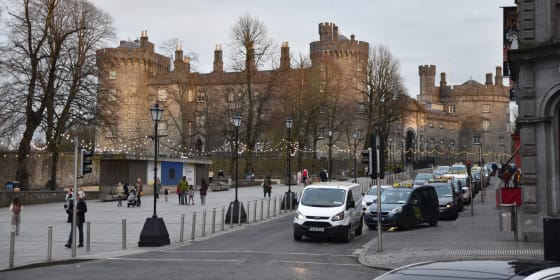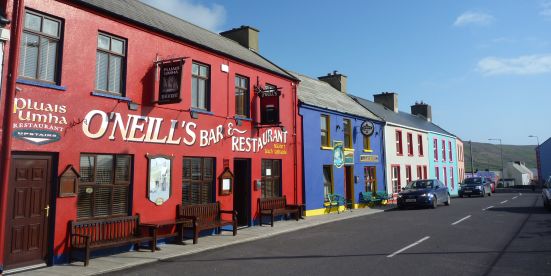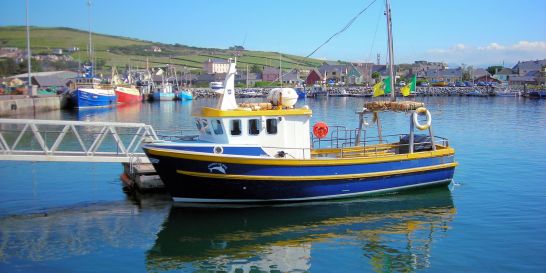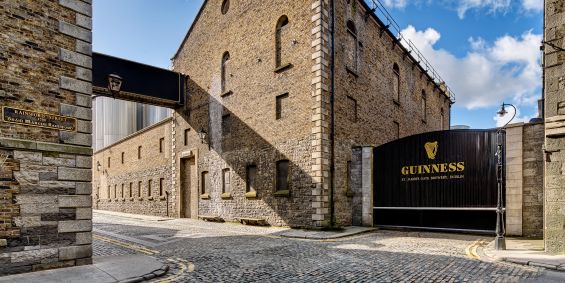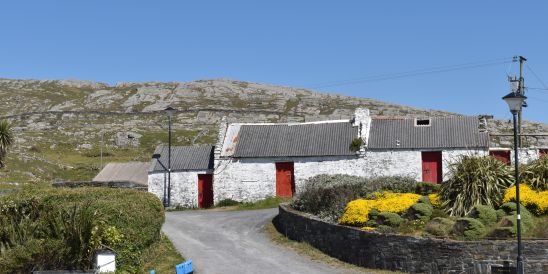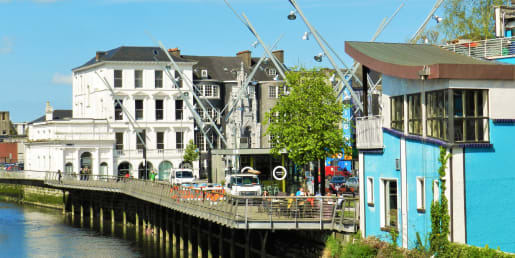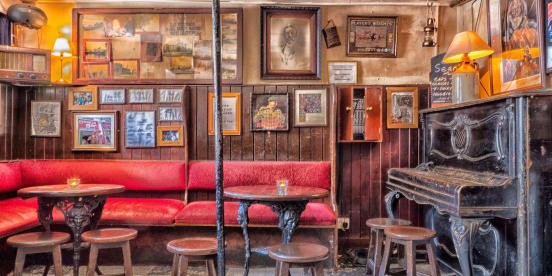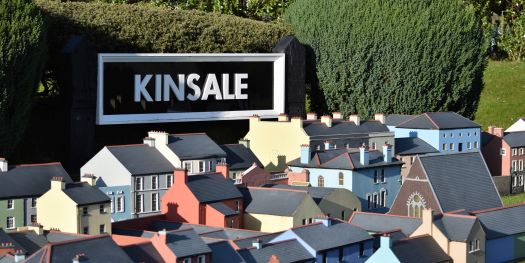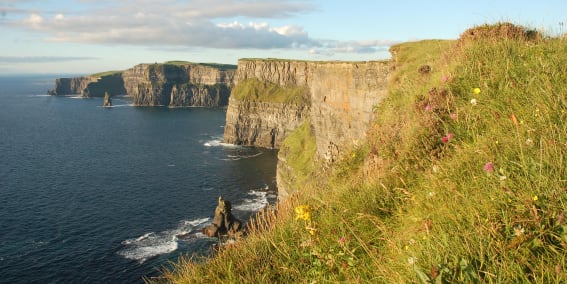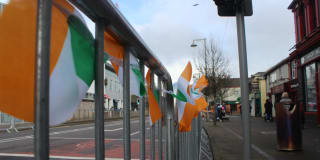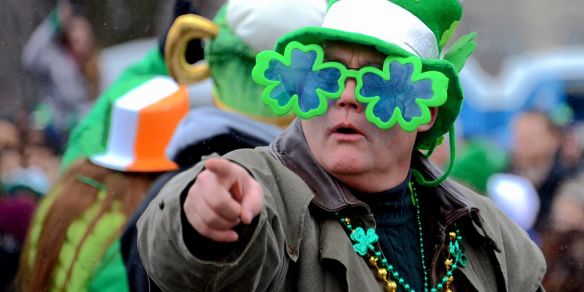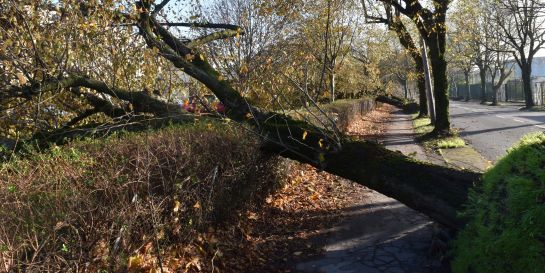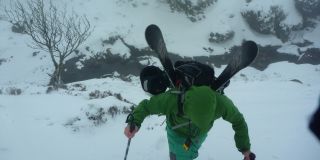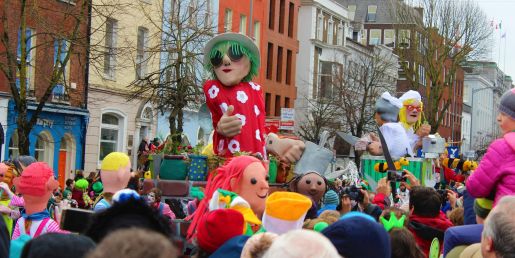The must-see sights across the UK and Ireland
Here are the must-see highlights across the UK and Ireland, each carefully chosen for their cultural, natural, or historical significance. These are the essentials for first-time visitors — starting points to experience the best of each destination.
Quick planning help
Use the at-a-glance table below to compare some of the top sites quickly, or take a deep dive through all the attractions to plan your perfect trip.
You can also jump to our sample routes for ready-made 10- and 14-day tours that you can customise and adapt to your interests with a private tour of Ireland and Britain.
At-a-glance: duration, crowds & logistics
Some essential attractions for first-time visitors — a snapshot to help plan your time.
| Attraction | Typical time | Best time | Crowds at peak times | Quick logistics note |
|---|---|---|---|---|
| Cliffs of Moher | 1.5-2 hrs on site | May & Sept | High | ~3-3.5 hr drive from Dublin; guided day tours available |
| Ring of Kerry | Full day | May & Sept | Medium | Narrow roads; recommend local driver or guided tour |
| Trinity College | 1-2 hrs | Early morning / late afternoon | High | Central Dublin; best to pre-book at peak times |
| Giant's Causeway | 1-2 hrs | Shoulder months (Apr-May, Sept-Oct) | Medium-High | Visitor Centre parking can be confusing; tours include transfer |
| Edinburgh Castle | 2-3 hrs | Spring/Autumn; pre-book | High | Steep paths; guided tour recommended for context |
| Stonehenge | 1-1.5 hrs | Shoulder months (Apr-May, Sept-Oct) | Medium | Shuttle from visitor centre; limited access to stones |
Ireland Essential attractions across the island
A country you can drive from top to bottom in no time, yet one that offers an amazingly diverse landscape at almost every turn. From the rugged Wild Atlantic Way to the lush green valleys of the Golden Vale, there is more bang for your buck here than almost any place on earth. Mix in the famously warm welcome of its locals with some of the most stunning attractions on earth, and you'll soon see why Ireland is everyone's favourite home away from home.
Cliffs of Moher County Clare, Ireland
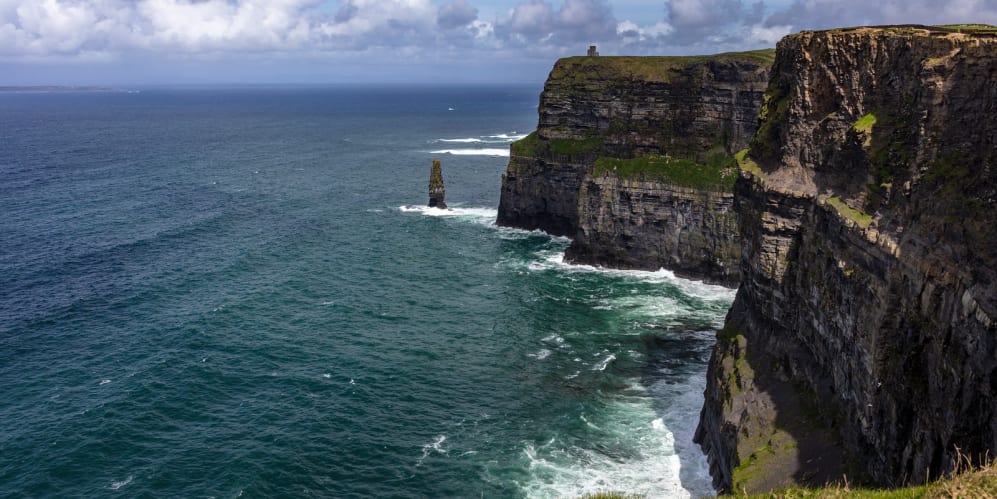
Attracting an estimated 1.5 million visitors each year, the Cliffs of Moher are Ireland's most popular natural attraction. Stretching for 8km (5 miles) along the Atlantic coast and soaring to 214m (702ft) at their highest point, they offer sweeping views across the ocean, with the Aran Islands visible on clear days. The historic O'Brien's Tower, first erected in 1835, has long served as a prime viewing point, while the modern Visitor Centre, opened in 2007, provides context and facilities for guests. Nature lovers will find plenty to admire here, from dramatic rock formations to the estimated 30,000 seabirds nesting along the cliffs, including razorbills, guillemots, and the much-loved puffins.
Entry fees include access to the Visitor Centre, its car park, café, and shops. Known for its sparse signage and occasional overcrowding along the main paths, the cliffs are best explored with an experienced guide, while keeping a safe distance from the edge. As visitor numbers continue to grow, ongoing conservation efforts — from designated nature reserves to sustainable tourism initiatives — aim to protect this unique landscape, ensuring that future generations can experience its raw beauty and untamed charm.
How to add it to your tour: You can visit the Cliffs of Moher on almost any tour of Ireland, as they feature on the majority of itineraries.
For more information on the Cliffs of Moher and Ireland's rugged west coast, check out our West Ireland Visitor's Guide.
How far is Cliffs from Dublin?
The Cliffs of Moher are about 270km (168 miles) from Dublin, travelling west from one side of the country to the other. By car, this takes around 3 to 3.5 hours. There are a number of bus and train options available, most of which include a transfer in Galway City or Limerick City. There are also guided day tour options that take you directly to the cliffs and back. You can also join a tour of Ireland, most of which start in Dublin and include a visit to the Cliffs of Moher.
Ring of Kerry County Kerry, Ireland
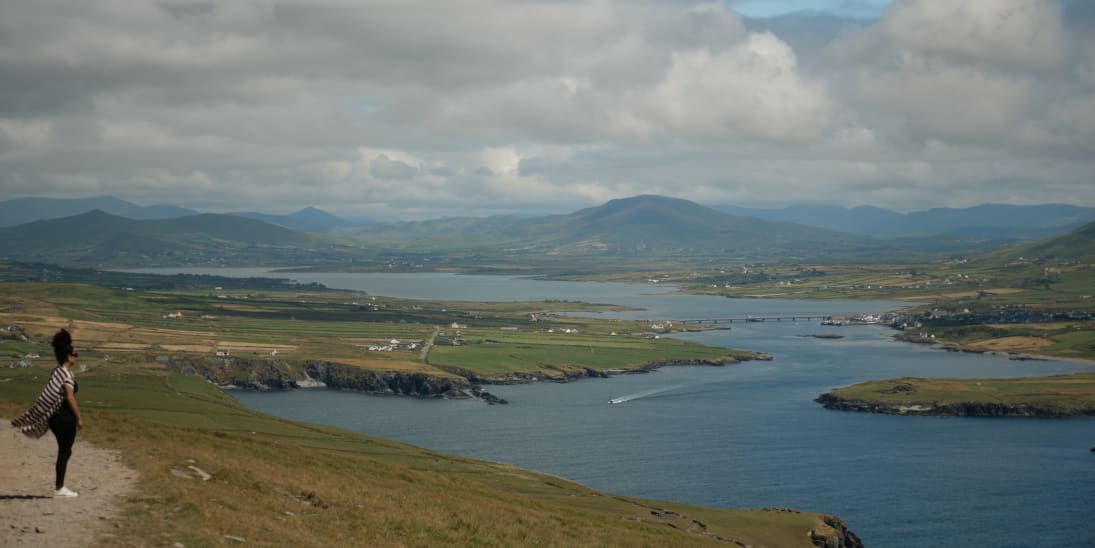
A 110-mile route of idyllic views, lush grasslands and coastal cliffs, the Ring of Kerry is arguably Ireland's most famous drive. With an estimated 1.1 million visitors each year, the Ring of Kerry has been a jewel in the crown of the Irish southwest for decades. You'll find most people say that the stretch between Waterville and Caherdaniel is the most picturesque, but you'll be hard pressed to find any part of the Ring of Kerry that doesn't warrant a stop for at least a quick snap. Coming off the loop, you can explore the Macgillycuddy's Reeks — the highest mountain range in Ireland — or simply take in the views of the Atlantic Ocean from the seemingly endless vantage points dotted throughout.
The roads of the Ring of Kerry are notoriously narrow, presenting some of the most nerve-wracking driving challenges of your life. If you are doing a self-drive, be prepared for some hair-raising squeezes between the oncoming traffic and stone walls. Most visitors choose to travel with a tour group or an experienced local driver — allowing you to enjoy the passing scenery without worrying that you will end up in a ditch.
Your best time to visit the Ring of Kerry is at the start and end of the tourist season. Early May or late September will give you the best chance of decent weather without having the overcrowding issues that can be common during July and August. If you are planning a trip in the high season, starting your tour early in the morning is essential if you want to avoid the bottlenecks of later in the day.
How to add it to your tour: The Ring of Kerry is a highlight on the majority of group tours of Ireland. You can also add it to a self-drive tour of Ireland's South West — although it's best enjoyed with an experienced driver.
For more information on the Ring of Kerry and the other nearby attractions, check out our South West Ireland Guide.
Trinity College & Book of Kells Dublin City, Ireland
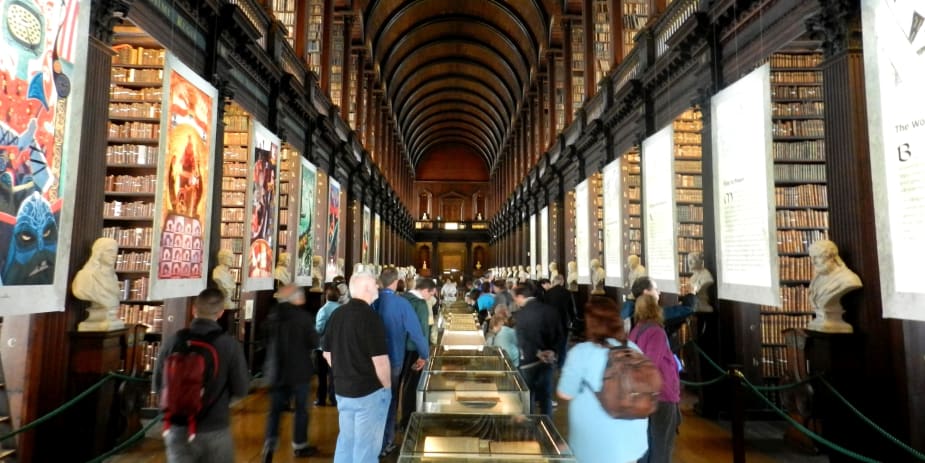
Located in the heart of Dublin City, just a few minutes' walk from Grafton Street and Temple Bar, Trinity College is one of Ireland's most prestigious and historic buildings. Best known for being home to the Book of Kells, a 9th-century brightly illuminated manuscript of Latin Gospels. Tracing its origins to the Scottish island of Iona, the book was brought to the town of Kells in County Meath for safekeeping during Viking raids, before eventually being transferred to Trinity College in 1653. As the pages of the book are turned only once in a while, behind glass, visitors will only see two pages at a time per visit.
The other main attraction of Trinity College is the Old Library Long Room. As the name suggests, this is 65-metre long (213 ft) library hall. Home to some 200,000 ancient and rare books towering above you on stunning oak shelves. There is also a marble bust gallery of history's greatest minds, including Newton, Swift and Aristotle. You'll see Ireland's oldest surviving harp, the Brian Boru Harp, and the original Proclamation of the Irish Republic from 1916.
This is very much an attraction for history buffs or architects, younger children may lose interest quickly and the majority of visitors may find the entire experience somewhat stiff. During peak season, expect crowds during late mornings and afternoons — for a quieter visit aim for early morning or late afternoon.
How to add it to your tour: You'll find a visit to Trinity College included on almost all tours of Ireland.
For more information on Trinity College and the Book of Kells, as well as other attractions in Ireland's capital, check out our Dublin Visitor's Guide.
Northern Ireland Historic sites and dramatic landscapes
Emerging from a difficult past and now basking in the curiosity of outsiders, Northern Ireland is a country that, while small in size, more than makes up for it with its unique attractions and fascinating history. From the awe-inspiring Giant's Causeway to the storied walls of Derry City, there is a sense that this is a land waiting to be discovered.
Giant's Causeway County Antrim, Northern Ireland

Northern Ireland may not boast as many natural wonders as the Republic, but the one it is known for arguably outshines them all. The Giant's Causeway is a hexagonal series of around 40,000 basalt columns stretching along the northern coast of County Antrim. Created by volcanic activity over 50 million years ago, legend has it that these stones once formed a bridge built by the giant Finn McCool to cross the sea and confront his Scottish rival, Benandonner.
Visually, there are few more stunning attractions on the island of Ireland, but the overall experience can leave some visitors underwhelmed. The Visitor Centre is a bit on the pricey side, parking can be confusing, and younger children will get bored easily. As the common saying about the Giant's Causeway goes: 'It's worth seeing, but not worth going to see'.
How to add it to your tour: You'll find a visit to the Giant's Causeway included on almost all Northern Ireland tours.
For more information on the Giant's Causeway and the other attractions of Northern Ireland, check out our Northern Ireland Visitor's Guide.
The Dark Hedges County Antrim, Northern Ireland
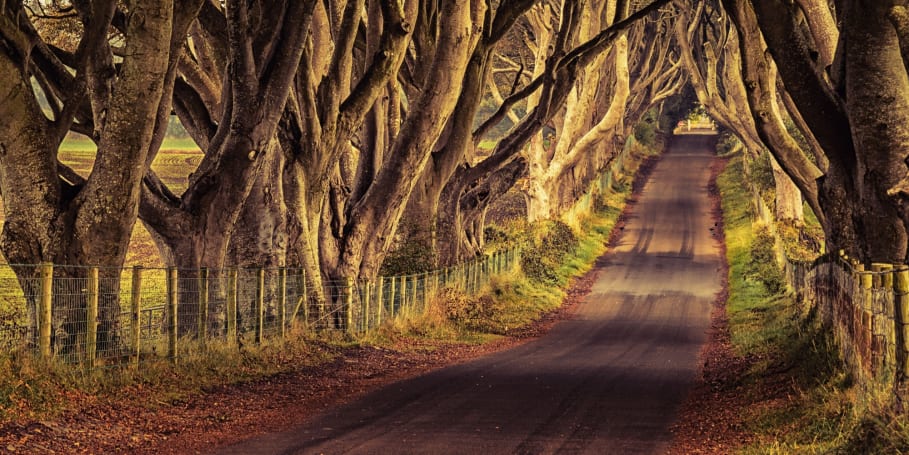
Most famous today as a haunting backdrop in Game of Thrones, the Dark Hedges is a beech-tree-lined avenue officially known as Bregagh Road, in County Antrim. The trees were originally planted by the Stuart family in 1775 to line the entrance to Gracehill House. Over time, their twisted trunks and interlocking branches created a natural tunnel with a spooky atmosphere — making it a go-to spot for film crews and fans alike.
One downside of the Dark Hedges is that it is located about a 1.5 hours' drive from the Game of Thrones Studio Tour, making it tricky to fit both into the same day. However, the Giants Causeway and Bushmill Distillery are relatively close, and together they make for a great full-day itinerary.
In truth, the Dark Hedges is worth a stop if you're passing through, but it's more of a brief stop than a half-day excursion. It's a great spot for photography year-round — in winter, the bare branches give the area an added spookiness. If you have a wide angle lens, get down low for the best leading lines and overall compositions. During peak summer months, you will be battling with lines of tripod-wielding photographers all jostling for the perfect shot. Early mornings and late evenings offer you the best chance to beat the crowds. Following the storms of 2023 and 2024, many of the older, more fragile beech trees were felled, so expect to see more gaps than you might see in older photos.
Facilities at the Dark Hedges are limited — there's no café or toilets near the lane itself, though there are options nearby. The avenue has been pedestrian only since 2017; vehicles are no longer permitted.
How to add it to your tour: You'll find a visit to the Dark Hedges included on a select number of tours of Northern Ireland — usually as a stop-off on the way to the Giant's Causeway or Bushmills Distillery.
For more information on the Dark Hedges and the other attractions of Northern Ireland, check out our Northern Ireland Visitor's Guide.
Titanic Exhibition Belfast City, Northern Ireland
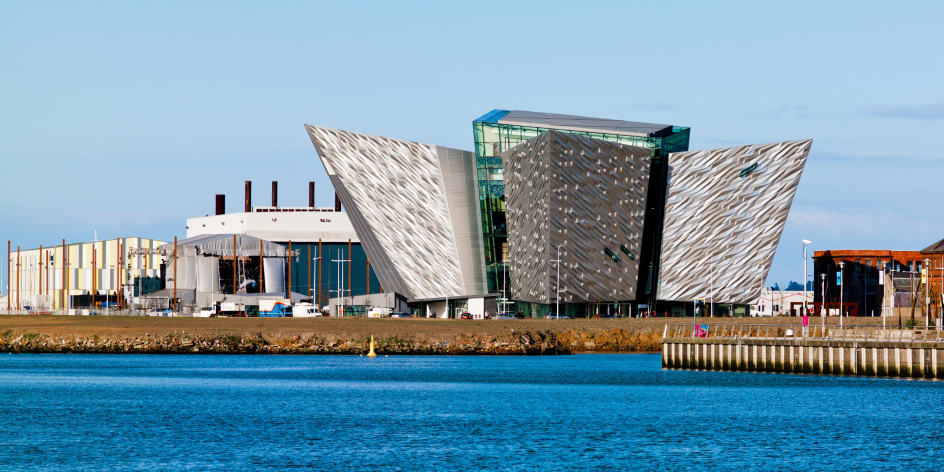
First opened in 2012, to commemorate the 100-year anniversary of the ship's sinking, the Titanic Exhibition in Belfast has grown to become one of the most popular attractions in Northern Ireland. Shaped to represent the famous vessel, with four 90-foot-tall hull shapes expanding outward — these are also known as 'icebergs' due to their shape and reflective surface — the building houses nine interactive galleries. You'll be taken through Belfast's shipbuilding history, the construction of the Titanic, details of its one and only voyage, as well as the discovery of the wreckage. There is also a visit to the shipyard, with a glass-floored viewing platform that allows you to see the original slipways from above.
This is a must for history buffs and maritime enthusiasts, though it may fall flat for younger visitors and those without a specific interest in the subject. The lack of large-scale artefacts from the wreckage is somewhat disappointing — although understandable for conservation reasons — and the reliance on text and screen presentations can feel a bit repetitive. That said, the overall presentation and design are best in class; modern, sleek and insightful. Like most popular attractions, the café and gift shop are a little on the expensive side, and it can feel crowded during the peak summer months — early mornings are best to avoid large crowds.
How to add it to your tour: You'll find a visit to Titanic Belfast included on almost all tours of Northern Ireland.
For more information on Titanic Belfast and the other attractions of Northern Ireland, check out our Northern Ireland Visitor's Guide.
Scotland Castles, highlands & rugged beauty
From the mystical Highlands to the cobbled charm of Edinburgh, Scotland is a country brimming with dramatic landscapes and otherworldly attractions. Ancient castles, rugged coastlines, and misty lochs create a setting that's nothing short of unforgettable. The Scots themselves are warm, witty and immensely proud of their history, and take great joy in sharing it with visitors.
Edinburgh Castle Edinburgh, Scotland

Sitting atop Castle Rock — a 900 year old volcanic plug — Edinburgh Castle has stood as a defining feature of the city skyline for over a millennium. Throughout this time, it has been used as a prison, a fortress and a royal residence. Today, it's Scotland's most visited attraction, home to the Scottish Crown Jewels, the Stone of Destiny as well as the city's oldest surviving building: St Margaret's Chapel. Visitors get a deep-dive into the history of the local area and Scotland as a whole — from medieval sieges to the Wars of Scottish Independence — with every corner seeming to reveal its own tale. A guided tour is strongly recommended, as many of these tales are not explained in detail otherwise.
Highlights include the Royal Palace, the National War Museum, and if the timing aligns — the daily firing of the One O'Clock gun, a tradition where a blank round from a canon is shot towards Edinburgh Harbour (fired daily, except Sundays, Good Friday and Christmas Day). There are several cafés and gift shops within the grounds, and as the castle sits at the end of Edinburgh's main thoroughfare, the Royal Mile, you'll find no shortage of amenities just outside the gates. The approach to the castle and some of the pathways on the grounds can be steep and uneven — so visitors with mobility issues should ideally be accompanied by someone a bit more sure-footed.
How to add it to your tour: Edinburgh Castle is a staple of Scotland tour itineraries. Even tours that are focused on the Highlands will usually include a day in Edinburgh at the start or end of the journey.
For more information on Edinburgh Castle, check out our Scotland Visitor's Guide.
Loch Ness The Highlands, Scotland

World-famous due to what may lie beneath, Loch Ness is the largest body of freshwater in Britain. Forged by glacial activity over 10,000 years ago, it stretches for 23 miles (37 km) through the Scottish Highlands — reaching depths of up to 750 feet (228.6 metres). Highlights in the area include the atmospheric ruins of Urquhart Castle on the western shore and the ever-popular boat cruises. Featuring top-of-the-range sonar equipment and a sense that Nessie (the Loch Ness Monster) could make an appearance at any moment, the tours are a hit for visitors of all ages.
The weather here can be unpredictable, even in summer months, it's best to be prepared for rain and wind. Mist and fog can reduce visibility of the water, but there's enough picturesque villages and panoramic views along the way to make it worthwhile. A guided tour of the lake and its surrounding area is highly recommended, as the must-see points are well spread out and not easily reachable without local knowledge.
How to add it to your tour: You'll find a trip to Loch Ness on the majority of tours of the Scottish Highlands. Many itineraries will include a boat trip on the loch itself, as well as visits to its local attractions like Urquhart Castle.
For more information on Loch Ness and other Scottish tour staples, check out our Scotland Visitor's Guide.
Ben Nevis Fort William, Scotland

Rising to 4,413 feet (1,345 metres), Ben Nevis is the tallest mountain in the British Isles and a mecca for nature lovers and hikers alike. Formed over 350 million years ago from the remains of a collapsed volcano, it stands proudly in the Scottish Highlands just outside the town of Fort William. The most popular route to the summit is the Mountain Track, also known as the Tourist Route — a well-worn path that typically takes around 6 to 8 hours for a round trip. On a clear day, those who reach the summit are rewarded with stunning views stretching as far as Northern Ireland and the Isle of Skye.
But taking on Ben Nevis is far more demanding than a casual walk. Proper gear and a decent level of fitness are essential, as well as an acceptance that the weather can change in a flash. Sadly, accidents and deaths are not uncommon, often caused by poor preparation. For peace of mind, hiking Ben Nevis with a professional guide is a must, especially for those unfamiliar with mountainous terrain. For those looking to take in the scenery without the climb, the nearby Nevis Range gondola on nearby Aonach Mòr offers majestic views and photo opportunities with minimal effort — ideal for casual explorers and families.
How to add it to your tour: A trip to Ben Nevis' foothills is included in the majority of Scottish Highland tours. To venture up, you'll need to arrange a specialist private tour or hire an experienced guide. To approach the summit, a decent level of fitness is required, as well as suitable hiking gear and clothing.
For more information on Ben Nevis, check out our Scotland Visitor's Guide.
England Ancient monuments & iconic landmarks
An endlessly varied land overflowing with history, a tour of England weaves together ancient monuments, vibrant cities and picturesque countryside. From the intrigue of iconic sites like Stonehenge and the Tower of London to the natural beauty of regions such as the Lake District and the Cotswolds, the attractions of England are familiar by name — yet always worth a closer look.
Stonehenge Wiltshire, England

Built between 3000 to 2000 BC, and today standing as one of the world's most famous prehistoric sites, Stonehenge's exact purpose still remains a mystery to this day. Made up of massive sarsen stones from Marlborough Downs (25 miles) and smaller bluestones from Wales' Preseli Hills (150+ miles), Stonehenge is arranged in vertical pairs with horizontal lintels, forming a horseshoe aligned to the movements of the sun. An incredible feat by today's engineering standards, and almost unthinkable with prehistoric tools. Stonehenge has been a UNESCO World Heritage Site since 1986.
On a visit to Stonehenge, there are a few practical points to keep in mind. Access to the stones is restricted — they are roped-off so the closest you'll typically get to them is about 25 feet. From the visitor centre, a shuttle bus (part of the ticket price), runs to the monument every 15 minutes, with the journey taking about 5 minutes. As the site is entirely open-air and set in the middle of a field, it's best to bring rain clothes and waterproof shoes as the English weather, even in the southwest, can be unpredictable.
How to add it to your tour: A stop at Stonehenge is included on almost all tours of Britain, especially those visiting the southwest of England.
For more information on Stonehenge and other iconic English sites, check out our England Visitor's Guide.
Lake District Cumbria, England

Located in north-west county of Cumbria, the Lake District is a national park known for its stunning mountains, lakes and walking trails. It is home to England's deepest lake (Wastwater) and its highest peak Scafell Pike (978m), as well as the tranquil waters of Derwentwater, Ullswater and Windermere.
If you're planning to travel through the Lake District, be prepared for roads that can be tricky to navigate in places, with steep gradients and narrow lanes making up much of the terrain. While there is public transport, it can be limited. The best bus and rail links are found in the towns of Windermere and Penrith. Walks and hikes vary in difficulty and some of the trails are more difficult than expected, so it's best to plan your route according to your experience, especially in unpredictable weather. Accommodation options are diverse — from luxury lakeside hotels to rustic campsites — and tend to book out quickly, particularly during the summer months.
How to add it to your tour: You'll find a visit to the Lake District included in many tours of Northern England and the Scottish Borders.
Tower of London London, England

One of Britain's most iconic landmarks, the Tower of London was founded by William the Conqueror during the Norman invasion of England around 1066. Despite its name suggesting a single structure, it is in fact a medieval fortress made up of 21 towers, enclosed by defensive walls and a moat. Over the centuries, its role has evolved — serving as a fortress, royal palace, prison, and treasury. Among its most famous prisoners were Anne Boleyn, wife of Henry VIII, and Guy Fawkes, the man behind the Gunpowder Plot to blow up the British Parliament.
Visitors will find the largest crowds gathering at the White Tower and the Crown Jewels. Allow at least two to three hours to explore, as there is a great deal to see and take in. While entry is on the expensive side, the depth of history and level of detail make it well worth the cost. Note that parts of the site have uneven pathways and stairs, so it may be challenging for those with mobility issues to navigate without assistance.
How to add it to your tour: A visit to the Tower of London will be included on almost all tours of England itineraries, especially those visiting its capital city.
For more information on the Tower of London and the other attractions of England, check out our England Visitor's Guide.
Sample routes: how to fit the must-sees
10-day highlights (fast-paced)
Day 1-2 — Dublin
Trinity College, the Book of Kells, and the city's museums and walking highlights. Allow time for a relaxed evening in a traditional pub.
Day 3 — Clare
Drive to the Cliffs of Moher (approx. 3-3.5 hours from Dublin). Overnight in County Clare to enjoy the cliffs at quieter times.
Day 4 — Ring of Kerry / Killarney
A full-day circuit around the Ring of Kerry or a shorter southwest option if you prefer less driving; consider a local driver at narrow sections.
Day 5 — Belfast
Fly or transfer to Belfast; visit Giant's Causeway and the Dark Hedges. Overnight in Belfast.
Day 6 — Scotland arrival
Ferry or flight to Scotland. Aim for Inverness as a base for Loch Ness.
Day 7 — Loch Ness
Loch Ness and Urquhart Castle; overnight heading toward Fort William.
Day 8 — Ben Nevis area
Explore Ben Nevis/Nevis Range; transfer toward Edinburgh in the evening or next morning depending on energy levels.
Day 9 — Edinburgh
Edinburgh Castle, Royal Mile and the city's museums — allow 2-3 hours for the castle plus time for exploring nearby streets.
Day 10 — London or depart
Train or flight to London; visit the Tower of London if time allows, or make onward travel arrangements from Edinburgh/London.
14-day relaxed highlights (a slower, recommended pace)
Days 1-3 — Dublin
Trinity College, national museums and a day trip to nearby sites (eg. Wicklow or Newgrange) to keep the first days relaxed.
Days 4-5 — West Ireland
Cliffs of Moher and the Galway region; use Galway as a base to enjoy slower-paced exploration.
Day 6 — Ring of Kerry
Either a full day on the Ring or split it over two days for a more relaxed pace.
Day 7 — Belfast
Travel to Belfast and visit Giant's Causeway the following morning if you prefer a gentler schedule.
Days 8-9 — Scotland
Fly to Inverness, explore Loch Ness and transfer toward Fort William at a comfortable pace.
Days 10-11 — Ben Nevis / Skye option
Hike or take the gondola near Ben Nevis, or use the time for a detour to Isle of Skye if you prefer dramatic landscapes over travel speed.
Days 12-13 — Edinburgh
Two full days in Edinburgh for the castle, Royal Mile, and museums — great for slower pacing and deeper exploration.
Day 14 — London or depart
Travel to London for the Tower of London or depart directly from Edinburgh/London depending on flights.
Quick cross-border practicals
- Currency: Republic of Ireland — Euro (€); Northern Ireland, Scotland & England — Pound Sterling (£). ATMs and cards work across borders but check card fees.
- Mobile & roaming: Roaming and data plans may change when you cross from the Republic of Ireland into the UK; check with your provider.
- Ferries & flights: Dublin (Ireland) ↔ Holyhead (Wales) by ferry, or Dublin (Ireland) ↔ Glasgow (Scotland) by flight are common connectors — ferries take longer but let you keep a car; flights are faster but can add airport transfer time.
- Driving: Left-side driving throughout; narrow rural roads (Ring of Kerry) can be challenging for first-time-left drivers — consider a guided driver.
FAQ
Can I realistically see the Cliffs of Moher and the Ring of Kerry in one trip?
Yes — but plan them as separate days or allow overnight stops. Driving from Dublin to the Cliffs is around 3-3.5 hours; the Ring of Kerry is a full-day circuit and is best enjoyed at a relaxed pace or with an experienced driver.
Is a guided tour better than self-driving for first-timers?
For first-time international visitors, guided tours remove navigation stress, handle parking and local scheduling, and usually include key transfers; self-drive adds flexibility but requires confidence with left-side driving and narrow rural roads.


